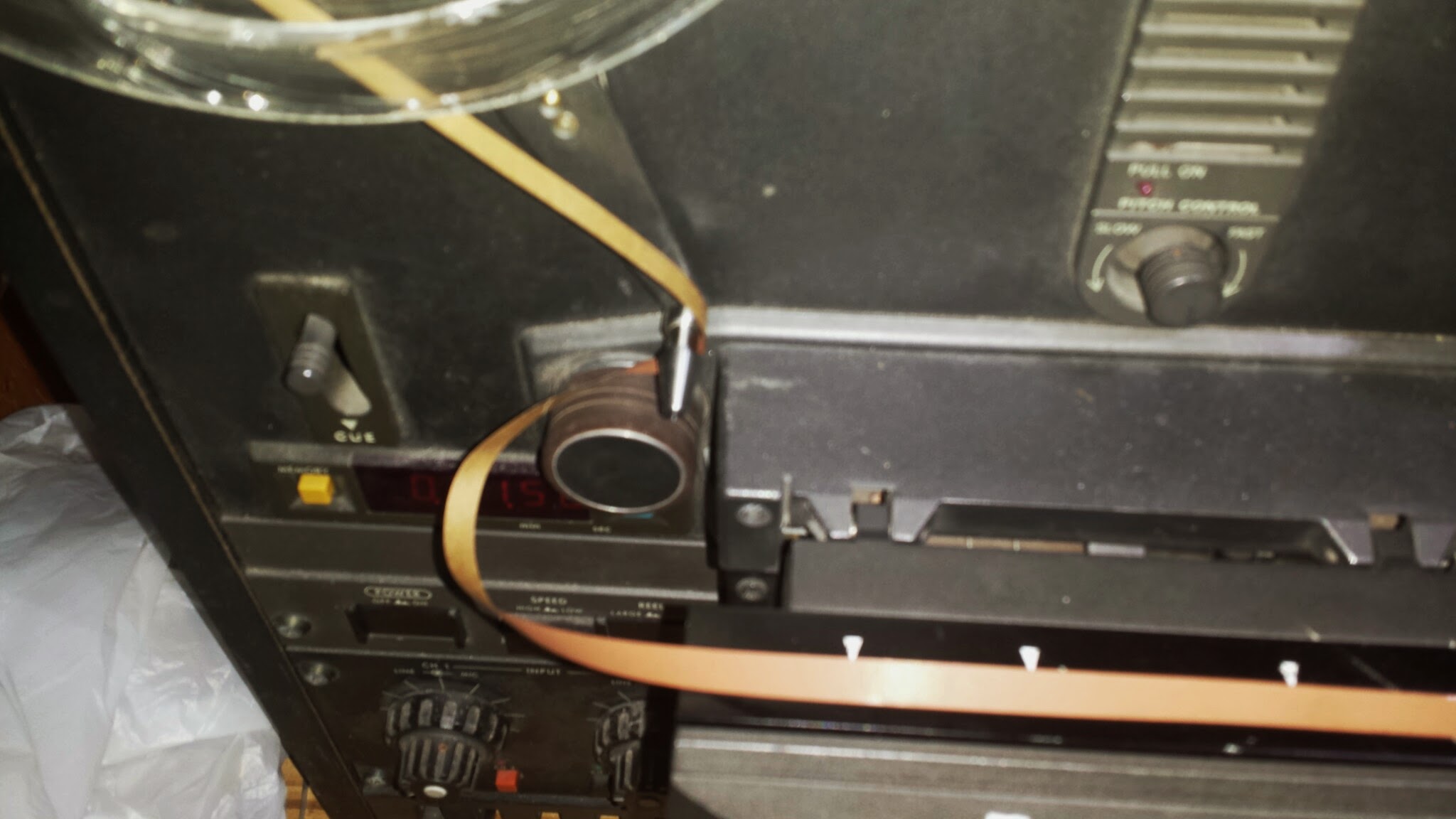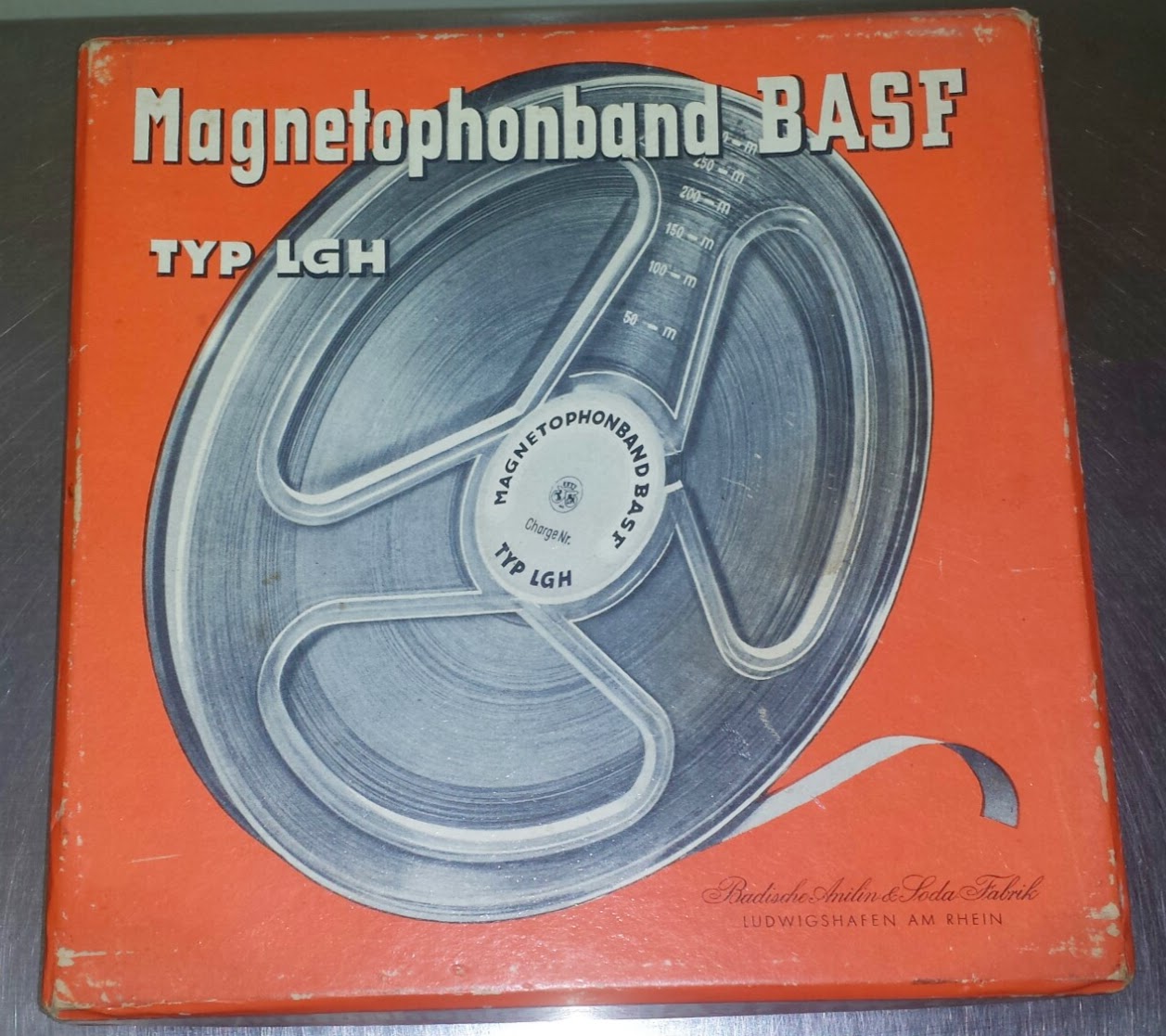World's First Public Recording of Music in 1936 on BASF Tape
 Apr 16, 2014 at 11:40PM
Apr 16, 2014 at 11:40PM Looking through our library of material we came across a recording presented to us on audio tape some years ago by BASF. We've recently digitised it and thought we'd relay the fascinating story of he world's first public recording on magnetic tape.
In 1934 BASF produced the world's first magnetic recording tape.
BASF the German chemical company and AEG were working together on a research programme into magnetic recording techniques - AEG was to produce a recording machine and BASF was to solve the problem of finding a suitable recording medium.
This idea for magnetic sound reproduction was first put forward as early as 1888 by an American engineer Oberlin Smith. His theory was to magnetise a sound carrier using an electromagnet so that it took on the rhythm of sound waves activating a membrane. When re-played the principle would work in reverse - the magnetic impulses creating electric currents again causing the membrane to oscillate and so become audible. He suggested using steel wire or strips of steel to transport the sound - or possibly cotton or silk threads impregnated with steel particles.
However technology at that time was not ready to put the theory in to practice. Experiments using steel wire and steel strips as sound carriers were tried out on the early recording machines of the 1900's by Danish physicist Valdemar Poulsen but they were tangled and the unwieldly steel strips tore. In order to mend them it was necessary to weld them back together which affected the magnetic properties of the tape and reproduced a loud crackle.
These problems were almost resolved when a recording machine using a paper based tape covered with fine particles of steel was invented by Dresden engineer Fritz Pfleumer in 1928. It was a major step forward but the paper proved too fragile to be practical. (You can see the paper base on this tape recently digitised at ProCopy)
 BASF 1/4 inch paper based tape
BASF 1/4 inch paper based tape
1932 AEG chose to develop this new concept and in their research for the finest pure iron particles they approached BASF in Ludwigshafen. It was BASF's idea of substituting plastic as the base material of the recording medium that was the breakthrough and the principle has remained unchanged til today.
In 1934 the first 50,000 metres of BASF's newly developed tape were delivered to AEG to be used on their specially produced recorder the "Magnetophon". In 1935 the Magnetophon was presented at the Berlin Broadcasting exhibition with the tape. By now coated with the improved iron oxide particles and named "Magnetophonband Tape.
We recently had this come in to ProCopy for digitising, we estimate that it's from the late 1940s:
 BASF Magnetophonband Tape
BASF Magnetophonband Tape
Sound reproduction techniques were becoming more sophisticated and the following year the London Philharmonic Orchestra conducted by Sir Thomas Beecham made the first public recording on magnetic tape at BASF in Ludwigshafen. The potential of the new medium was quickly realised and tape went on to be the basis for radio, film, television, music and computer industry for the next 70 years.
The following historic recording is preserved in BASFs company archives in Ludwigshafen.
Tape recording 1936 in Ludswigshafen (W.Germany) - Featuring the London Philharmonic Orchestra conducted by Sir Thomas Beecham. W.A. Mozart - Meneutto from Symphony no.39 in E flat (dur 4:15). Followed by a modern recording of the same piece showing the improvements in recording mediums over time.
So how does this tie in with our recent digitising job? Well the paper based tape you see on the machine above was supplied in the Magnetophon tape box by the client, dating it to the 1930's - 1940's. We threaded up the machine and played back the tape to discover that it was (Sir) Robert Menzies, newly re-elected Prime Minister of Australia addressing the WA State Parliamant. This dates the recording to around 1949/50! History caught on some of the earliest tape recording technology - a fascinating find.
Want to discover what gems you've got hidden away? Drop in to our office and we'll assess your audio or film recordings for you. Or call us on 1300 4 PROCOPY we'd love to help with your next project.
 WebMaster | Comments Off |
WebMaster | Comments Off | 
